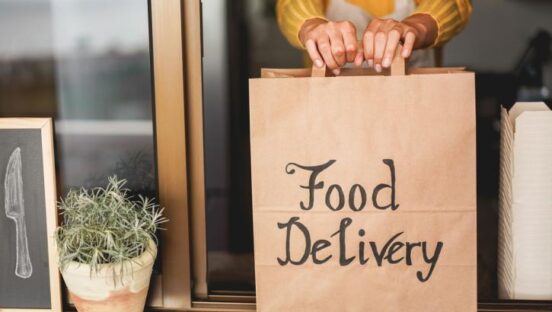The National Restaurant Association’s Restaurant Industry 2030 Actionable Insights for the Future Report projects restaurant sales to grow to $1.2 trillion by 2030, primarily driven by off-premise orders. Deloitte’s Restaurant of the Future Report confirms this growth, reporting 61 percent of consumers order takeout or delivery once a week or more—a 29 percent increase from the prior year.
From fast casual, fine dining and quick service, restaurants of all sizes will be hungry to grab a piece of the pie by investing more in their delivery strategy. However, with extra equipment and more guests to satisfy, integrating these services might be more challenging than it seems without the right technology.
Consider the following five tips to improve your restaurant’s delivery operations.
- Centralize orders in one platform
Mastering multiple online delivery systems is like learning different languages. UberEats, GrubHub, DoorDash, and other delivery systems vary in features, cost, customer service and usability. Without the right technology, managing third-party delivery services can seem unwieldy when staff must shift from platform to platform to send orders to the kitchen promptly.
Instead, centralize dine-in, mobile, online, delivery, pick up and curbside orders in a single software system that seamlessly integrates with third-party services and automatically pushes receipts or digitally displayed orders to the kitchen staff.
Brands like Chipotle have even created a second make-line, which is dedicated to fulfilling online and delivery orders. The second make-line is separate from the customer-facing line but uses the same software system—enabling uninterrupted digital order fulfillment to in-store customers and keeping customer data in a single platform.
This improves accuracy, increases speed, boosts customer satisfaction, and grows your bottom line.
2. Delivery-proof your menu
Creating and keeping online menus on different third-party platforms at different restaurant locations can cause headaches, particularly when you need to adjust price, availability of items or specials that are no longer available.
If your POS system isn’t integrated with each third-party application, busy employees will need to re-enter these orders manually, taking time away from customer-facing duties when restaurants are already short-staffed.
Try implementing delivery-management software to help manage multi-location and multi-platform menus from one place. This technology can also be switched off when the drive-thru, dine-in and delivery order trio becomes too much for staff to handle and switched back on when order traffic has subsided.
This sets expectations for your guests and helps put your restaurant’s best foot (and food) forward on third-party delivery platforms.
3. Direct delivery drivers to designated areas
With multiple delivery drivers milling about for pickup inside your restaurant, your space gets crowded quickly—making the dine-in experience less agreeable. Although essential to getting orders out the door and into your diners’ hands, drivers can take up room that otherwise would be occupied by patrons.
Casual dining chains like Golden Corral have implemented large digital signage screens outside for clear curbside and delivery pickup zones to help direct drivers to a designated pickup area outside of the flow of traffic. This can help decrease time spent weaving through waiting drivers and increase guest satisfaction with dine-in, takeout and delivery orders.
4. Own your guest experience offline and online
Restaurants that are successfully increasing their revenues from takeout and delivery sales are doing so by finding ways to offer exceptional, branded, customer experiences across all digital channels. With the right technology partner, you can ramp up mobile and online ordering using your own branding to maintain control over your diners’ experiences.
Delivery providers charge as much as 30 percent, depending on the level of service you sign up for, eating into already-thin margins. Taking on delivery yourself saves your restaurant from paying third-party service fees and puts you in control of the customer experience to ensure food is hot, fresh, and ready.
5. Save time with integrated reporting
Analyzing sales channels (along with menu and labor performance) is a good way to optimize operations and grow your business. Unfortunately, gathering data from different third-party partners is time-consuming and prone to mistakes.
Instead, look to your POS to integrate online sales channels and view near real-time insights to improve decision-making and efficiency. Use predictive analytics to understand loss prevention and help your restaurant run more smoothly.
Delivery—a restaurant mainstay
Twenty years ago, restaurant-quality meal delivery was largely limited to foods like pizza and Chinese takeout. Today, food delivery has become a global market, having more than tripled since 2017, and poised for even further expansion.
To stay competitive, restaurants must adapt their strategies, think critically about delivery partnerships, and experiment with new ways of doing business.
Lindsay Petrovic is Vice President and Head of Product Management, Restaurants, at NCR Voyix. In this role, she focuses on cloud-based, customer solutions that transform, run and connect restaurants’ technology platforms.












